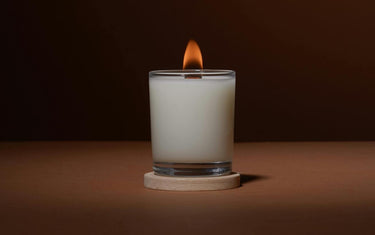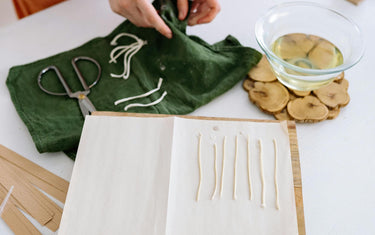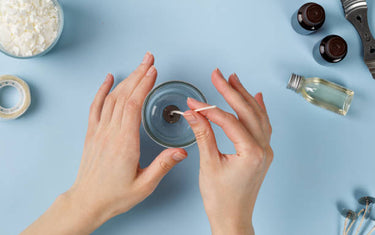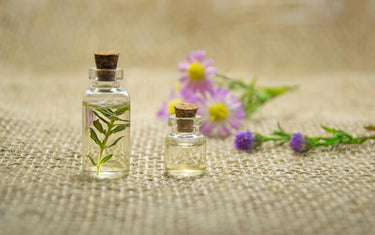5 min read / 5 March 2023 / Laura Garvin Gomez
Tea Tree Oil for Nail Fungus: Does it Work?
Tea tree oil is a natural, antifungal medicine that can help treat nail fungus. Learn what the research says, whether the oil can cure nail fungus and the best ways to use it.
Share this post
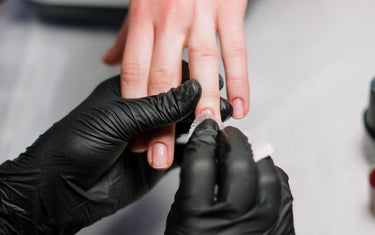
No one plans on getting a nail infection, but fungus has its own ideas and can appear on feet and hands when you least expect it.
Should it happen to you, there is no need to panic as it is a very common infection that can be easily treated to restore your nails back to their former glory.
Tea tree essential oil is a traditional remedy that has been used for centuries by people around the world to treat a whole host of ailments, including nail fungal infections.
We look at how effective tea tree oil is at treating nail infections and explain how to use and apply it to your nails.
What is nail fungus?Nail fungus is a common infection that can affect nails on the hands or feet, although more often than not, it tends to appear on toenails. Infections can happen in a few different ways: if water gets into your shoes and the feet are not dried quickly enough; if feet are allowed to get hot and sweaty; or if you walk barefoot in places where a fungal infection can spread easily (locker rooms, gyms etc.). |
How to use tea tree oil for nail fungus
There are a few different ways to use tea tree oil for nail fungus:
- Soaking a cotton ball in a diluted tea tree mixture and holding it against the affected nail for 5 minutes.
- Use a cotton bud to apply the tea tree mixture to the affected nail and leave to dry.
- Create a nail bath: Use warm water and add a few drops of tea tree. Soak the affected nails.
Remember to always dilute the tea tree oil with a carrier oil before use.
This is a treatment that would need to be repeated for several days or weeks before you begin to see any noticeable results.
You should also keep your nails as clean as possible during this period, which also includes keeping them trimmed down to avoid the build-up of dirt underneath the nail.

What is the best tea tree oil to use for nail infections?
If you have a nail infection, you could try tea tree essential oil as a potential natural remedy.
The oil has a strong, herby scent, so the best carrier oils to use are coconut oil or jojoba oil which can help conceal its distinct aroma.
You can also use tea tree oil to help with relieving congestion so you can breathe a little more easily, while it is also known to help fight common infections.
Dilute it with a carrier oil and apply topically or mix it into a warm bath, as part of a soap or candle recipe or in an oil burner around your home.
Does tea tree oil kill nail fungus?
A fair amount of research has been carried out to see if tea tree oil can be used to treat nail fungus.
One lab study found it to be particularly effective in treating Trichophyton rubrum (T. rubrum), which is a common cause of athlete’s foot. [1]
This was not tested on infected human nail tissue, but on lab-grown human nail clippings and T. rubrum cultures.
A study carried out in 1999 tested fungal creams that contained tea tree oil to check their effectiveness.
The results found that using the cream by itself did not improve the infection, which suggests that using tea tree oil by itself may not be enough to clear it up.
However, an earlier study from 1994 found that when tea tree oil was applied directly to the infected area, it proved to be as effective as a prescription antifungal cream called clotrimazole. [2]
As it stands, scientific findings are not too clear, but there is some indication that tea tree oil’s antifungal properties could help to reduce some of the symptoms caused by a nail infection.

How do I perform a patch test?
You can use tea tree oil without dilution, although we advise that you first take a patch test to ensure it doesn’t cause and adverse reaction to your skin:
- Apply a small amount of tea tree oil to the inside of your forearm.
- Cover the area with a plaster.
- Leave it for 24 hours.
- If there is no redness, itchiness, or inflammation, it should be fine to use tea tree oil on your infected nails.
Are there any side effects to using tea tree oil?
Tea tree oil is generally considered to be safe to use, although in rare cases, there have been instances of strong allergic reactions.
This is why it is advisable to carry out a patch test as described above before using it on larger areas of your body.
When applied topically, tea tree oil can cause some forms of skin irritation, such as redness, itching, stinging and dry or scaly skin.
It can also be caused by tea tree oil that is too old to use or that has been improperly stored, so always keep it in a dry, cool area fully sealed and do not use it after more than one year.  Unfortunately, nail infections are a fact of life, but good maintenance of your nails should ensure you are far less likely to experience it.
Unfortunately, nail infections are a fact of life, but good maintenance of your nails should ensure you are far less likely to experience it.
Using tea tree oil offers a safe and natural remedy that could help to combat nail fungus and the skin around it.
Patience will be needed as it can take some time for the oil to work its magic, and if you see any adverse effects from using tea tree oil, stop using it right away and speak with a doctor about how to clear up the infection.
|
Product Name |
100% Pure Tea Tree Essential Oil |
| Botanical Name | Melaleuca Alternifolia |
| Scent Type | Fresh |
| Benefits & Uses | Decongestant, Skin, Antibacterial |
| Suitable for Diffusers? | Yes, this tea tree essential oil is perfect for diffusers. |
| Suitable for Candles and Soaps? | Yes, this tea tree essential oil is perfect for candle and soap making. |
| Extraction Method | Steam Distillation |
| Bottle Type | Tamper proof and UV resistant |
References
[1] F. C. Flores et al. (2013) Antifungal Activity of Nanocapsule Suspensions Containing Tea Tree Oil on the Growth of Trichophyton rubrum https://link.springer.com/article/10.1007/s11046-013-9622-7
[2] D S Buck et al. (1994) Comparison of two topical preparations for the treatment of onychomycosis: Melaleuca alternifolia (tea tree) oil and clotrimazole https://pubmed.ncbi.nlm.nih.gov/8195735/

